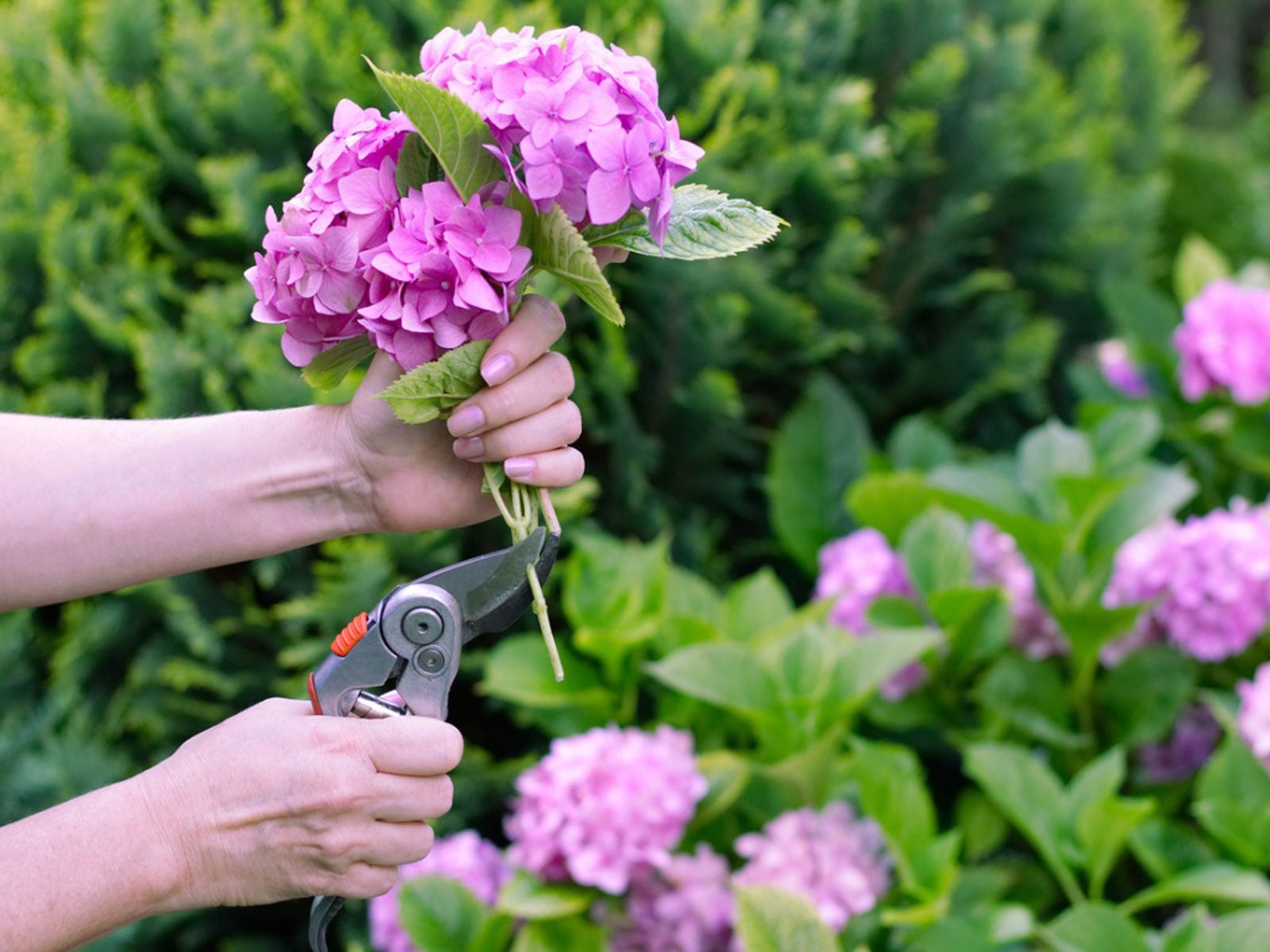Preserving Cut Hydrangea Blooms: How To Make Hydrangeas Last Longer


For many flower growers, hydrangea shrubs are an old-fashioned favorite. While older mophead types are still quite common, newer cultivars have helped the hydrangea see renewed interest among gardeners. Regardless of the variety, there is no denying that hydrangea blooms are both vibrant and attention grabbing. It is only natural that you may wish to pick and use them as cut flowers. However, doing so may present some difficulties.
One of the most common issues related to keeping hydrangeas fresh in a vase is making sure that the flowers do not wilt. Wilting of hydrangeas occurs most often after the flowers have just been cut or after they have just been arranged. Due to the large flower heads, the prevention of wilt will require careful attention to hydration and conditioning.
How to Make Hydrangeas Last
When going into the garden to cut hydrangea blooms, make certain to bring a bucket of clean water. Immediately after cutting, place the flowers into the water. Cut hydrangea blooms perform best when older flowers are selected, as younger blooms may be more difficult to keep hydrated. Before arranging, allow the flowers to sit in water in a cool place to rest for several hours.
Many gardeners and florists follow additional post-harvest procedures in order to reduce the likelihood of wilt. Among these methods of keeping hydrangeas fresh is the process of dipping the stem of the hydrangea in boiling water or placing the stem of the hydrangea in alum.
Dipping cut hydrangeas in alum is one of the most popular methods of preventing wilt. Alum can be found in the spice or baking aisle of most grocery stores. After cutting, simply dip a small section of the hydrangea stem into the alum powder before putting the flower in a vase. It is believed that this process will help the flowers with water uptake.
If the use of alum is not an option, many suggest dipping the stem of hydrangea in boiling water after cutting. Place the bottom inch (2.5 cm.) of the stem directly in the water for about thirty seconds. Then, remove the flower and place it in a vase of clean water. Never use kitchen containers for this process, as hydrangeas are toxic.
If hydrangea flowers still wilt, many can be revived with a thorough soaking. To do so, fill a clean bucket with water and place the flower heads inside. Allow the flowers to soak for several hours then remove and place them in a vase. This additional hydration should fully restore freshness to the hydrangea blooms.
Gardening tips, videos, info and more delivered right to your inbox!
Sign up for the Gardening Know How newsletter today and receive a free copy of our e-book "How to Grow Delicious Tomatoes".

Tonya Barnett has been gardening for 13 years. Flowers are her passion. She has transformed her backyard into a cut flower garden, which she regularly chronicles on her YouTube channel http://www.youtube.com/@tonyawiththeflowers.
-
 Looking For Plants To Give You The Soft And Fuzzies? Try These 5 Fuzzy Leaf Plant Options
Looking For Plants To Give You The Soft And Fuzzies? Try These 5 Fuzzy Leaf Plant OptionsLovers of texture, drama, silver foliage and tactile plants will adore these special sensory garden additions. These fuzzy leaf plant options will leave you all aglow
By Susan Albert
-
 Get Ready For A Summer Of Hummers! Grow These Full Sun Hummingbird Plants and Flowers
Get Ready For A Summer Of Hummers! Grow These Full Sun Hummingbird Plants and FlowersIf you’re lucky enough to enjoy a sunny backyard, make sure you are maxing out on your pollinator opportunities and grow these full sun hummingbird plants and flowers
By Tonya Barnett